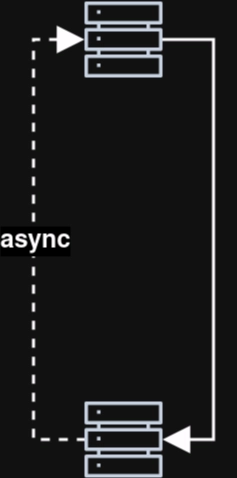In our modern, digitally interconnected world, APIs (Application Programming Interfaces) play a crucial role in software development. They act as connectors that allow different software components to communicate and interact with each other. This enables smooth data exchange, function calls, and seamless integration into various software systems. Over time, various API architectures have emerged to optimize these processes. Let’s take a closer look at the six most popular architectures:
1. SOAP (Simple Object Access Protocol)
Let’s start with SOAP, a veteran among API architectures. SOAP stands out for its comprehensive structure and uses XML as its foundation. This architecture is often employed in industries such as financial services and payment gateways, where security and reliability are of utmost importance. However, if you are working on a lightweight mobile app or a quick prototype, SOAP might be too extensive due to its complexity and depth.

2. RESTful APIs (Representational State Transfer)
Another prominent architecture is RESTful APIs, which form the backbone of the internet. They are highly popular, easy to implement, and utilize HTTP methods. Most of the web services you interact with daily, such as YouTube, are powered by RESTful APIs. However, it’s worth noting that REST may not be the best choice if you require real-time data or are dealing with a highly interconnected data model.

3. GraphQL
Now, let’s explore GraphQL, an API architecture that not only provides a structure but also offers a query language. This allows clients to request specific data without fetching unnecessary information. This leads to more efficient network communication and faster responses. Facebook developed GraphQL to deliver efficient and precise data to its billions of users. Today, companies like GitHub and Shopify rely on GraphQL. However, it comes with a steep learning curve and may be overkill for simpler applications. Additionally, it requires more server-side processing due to its flexible query capabilities.

4. gRPC (gRPC Remote Procedure Call)
Another modern architecture is gRPC, which relies on Protocol Buffers. This approach is popular in designing microservices architectures. Companies like Netflix use gRPC to handle extensive communication between their services. However, when working with browser clients, gRPC may pose challenges due to limited browser support.

5. WebSocket
For real-time and bidirectional connections, WebSocket is the tool of choice. This architecture is perfect for live chat, video applications, and real-time games where low-latency data exchange is crucial. However, if your application doesn’t require real-time data, using WebSocket might introduce unnecessary complexity.

6. Webhook
Finally, let’s discuss Webhooks, which are based on event-driven HTTP callbacks or asynchronous operations. For example, GitHub uses Webhooks to notify other systems when a new commit is pushed. However, Webhooks may not be the best choice if you need synchronous communication or immediate responses.

As you can see, there is no one-size-fits-all solution. Choose the architecture that best suits the specific requirements of your project. And Happy Coding!


APIs truly are the backbone of modern software development. Your article does an excellent job highlighting the strengths and weaknesses of each architecture. I found the section on GraphQL particularly interesting, as its flexibility really sets it apart from REST.
Out of curiosity, how would you approach a project that requires both real-time data updates and flexible queries? Would a combination of WebSocket for real-time communication and GraphQL for structured queries make sense? Looking forward to your thoughts! 😊